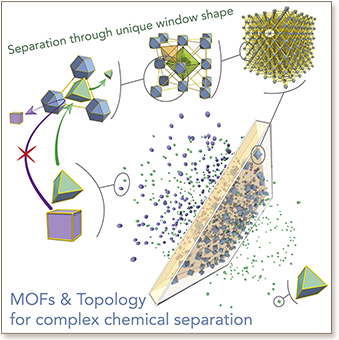

Chemical separations are of prime industrial importance; however, they consume a large portion of total industrial energy. Credibly, adsorbent-based separation methods offer the prospective to drastically lessen the energy demand of conventional energy-intensive separation processes. Prominently, a special class of porous materials, namely metal-organic frameworks (MOFs), are reasonably positioned to address various demanding separations in an energy-efficient manner. Out of a myriad of possible topologies for the construction of MOFs, face-transitive nets affording a sole type of window, preferably defined by three- or four-membered rings, can be regarded as ideal blueprints for the construction of MOFs for targeted separations. Intricate separations by MOFs based on some of these topologies are discussed, highlighting the effect of appropriate pore aperture and channel size with prerequisite functional groups on their separation performance. MOFs based on face-transitive nets offer great potential as effective fillers for the construction of practical mixed-matrix membranes (MMMs) with improved separation properties over conventional polymeric membranes.
